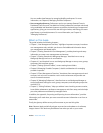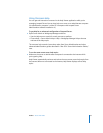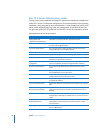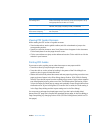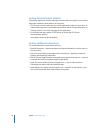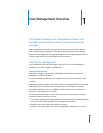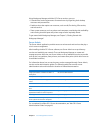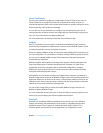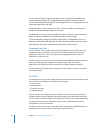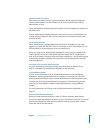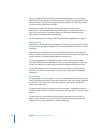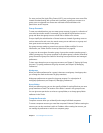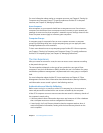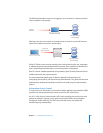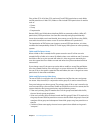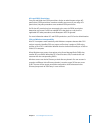
22 Chapter 1 User Management Overview
You can use NetInstall to upgrade operating systems, install software updates and
custom software packages, or re-image desktop and portable computers. You can
create custom installation packages for various departments in an organization, such as
marketing, engineering, and sales.
Using NetInstall, it’s not necessary to use CDs or DVDs to configure a computer. All
installation files and packages reside on the server.
Use NetInstall to run pre- and post-installation scripts to perform system commands
before or after the installation of a software package or system image.
To create NetInstall packages, use System Image Utility or PackageMaker. Then use
NetBoot to deploy NetInstall packages. For more information about using these tools
with NetInstall, see System Imaging and Software Update Administration.
Command-Line Tools
Mac OS X Server v10.5 includes several client-management command-line tools. For
example, the dscl tool allows you to view and edit account settings and manage
preferences, while the mcxquery tool reports the managed preferences that are
effective for a particular user.
Use the mcxquery tool to review how combined and overridden managed preferences
interact at the user, group, computer, or computer group level. The tool also
determines which directory domain stores those managed preference settings.
For more information about client-management command-line tools, see Command-
Line Administration.
Accounts
To manage accounts, you use an administrator account. With an administrator account,
you can set up and manage the following account types:
 User accounts
 Group accounts
 Computer accounts
 Computer groups
When creating a user account, you must specify a user name and password, which is
needed to prove the user’s identity. You can also specify a user identification number
(user ID), which is useful for folder and file permissions. Other user account information
is used by various services to determine what the user is authorized to do and to
personalize the user’s environment.
In addition to the accounts you create, Mac OS X Server also has predefined user and
group accounts, some of which are reserved for use by Mac OS X.



